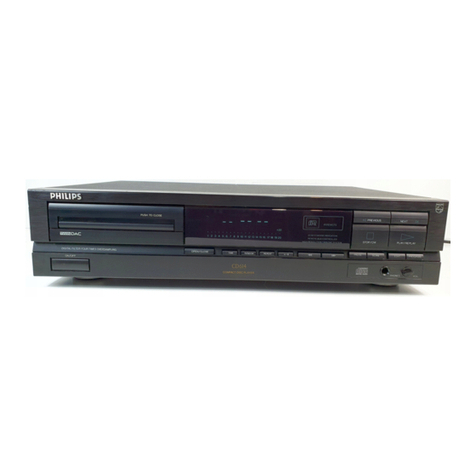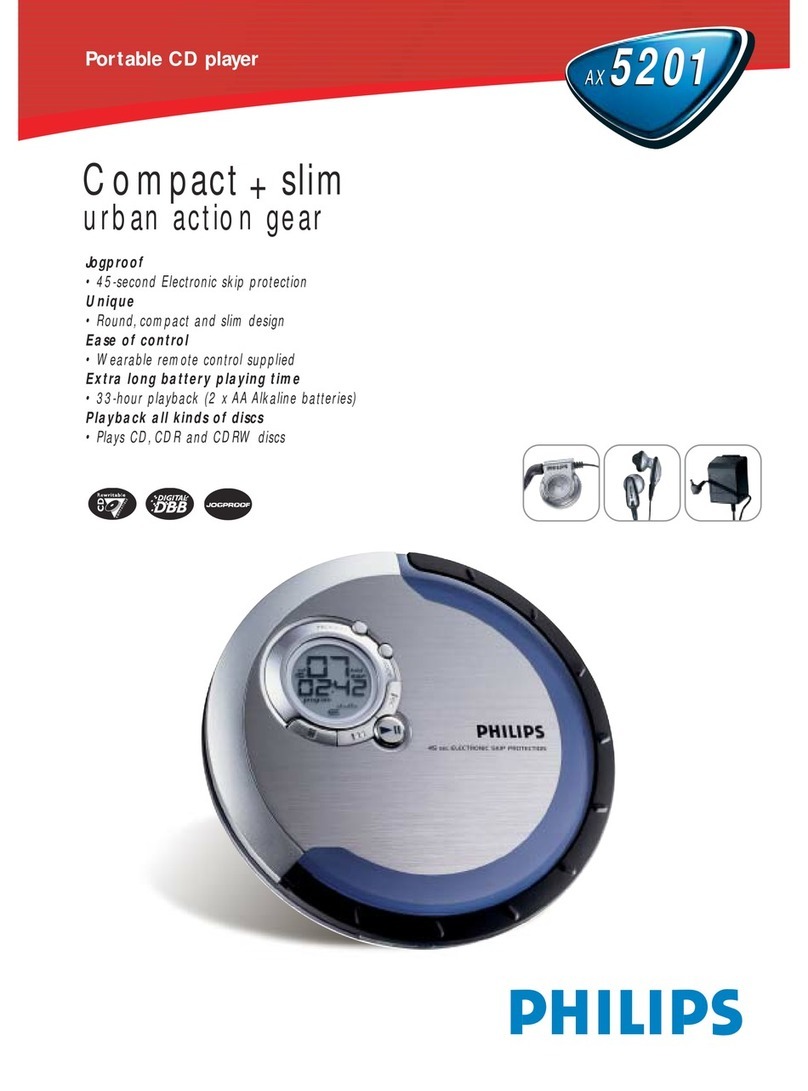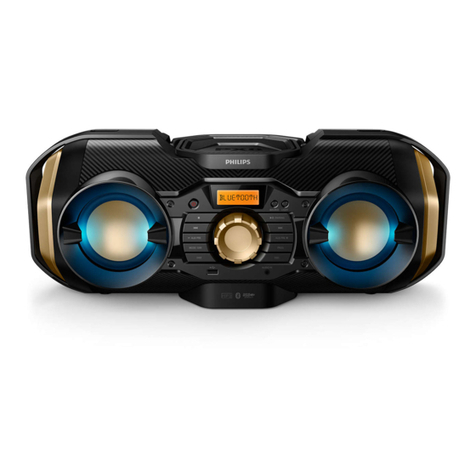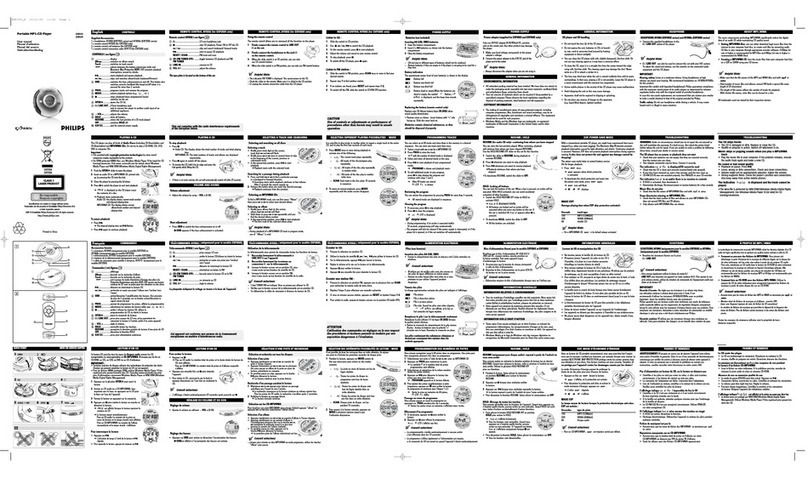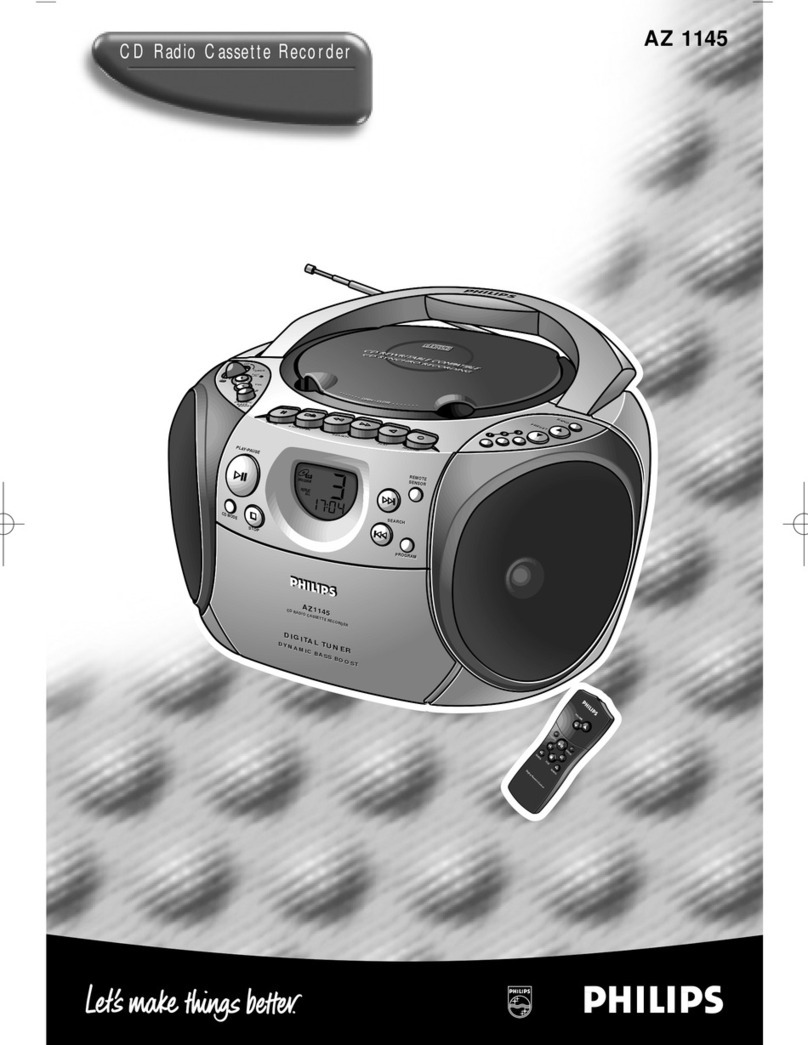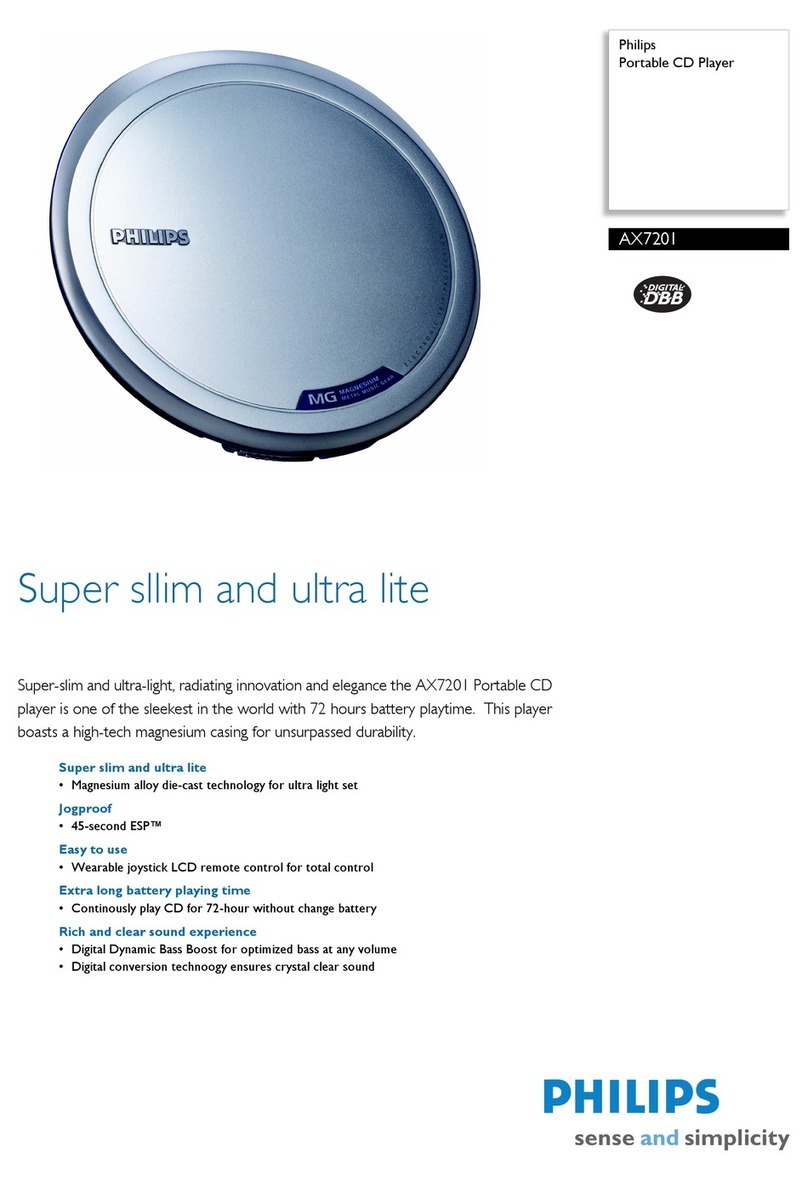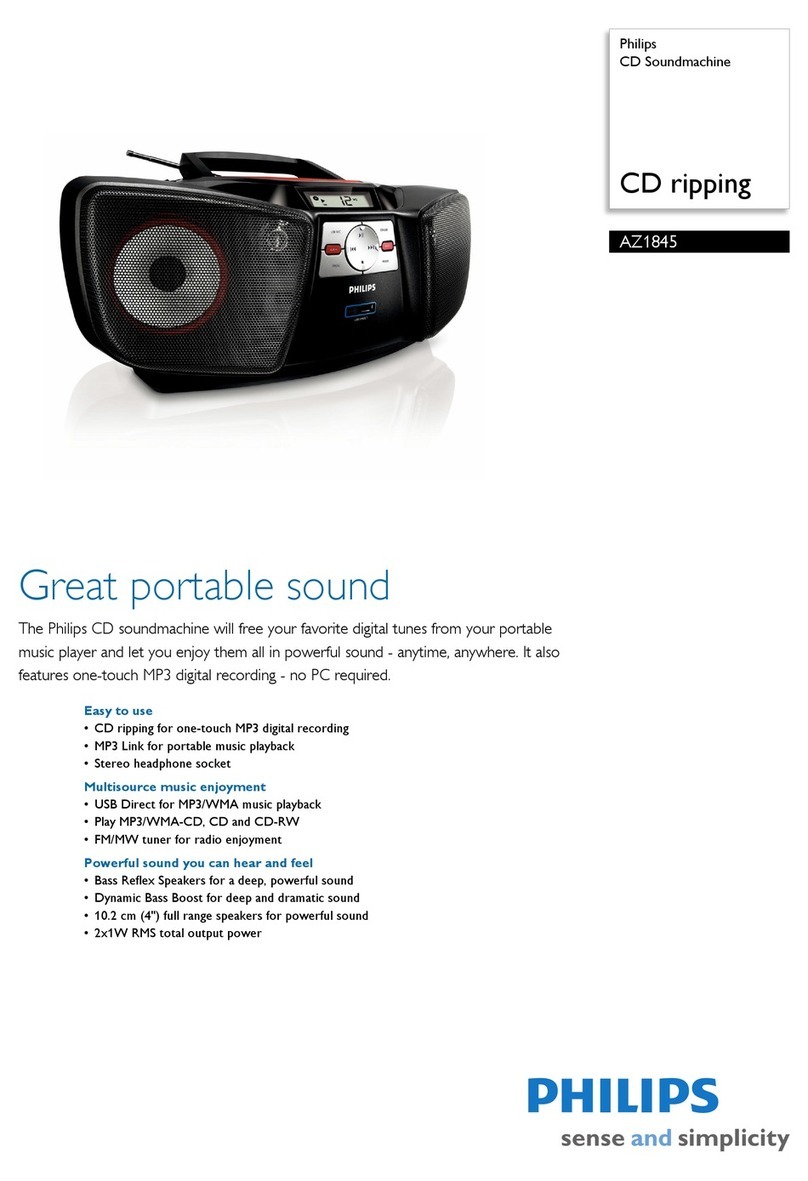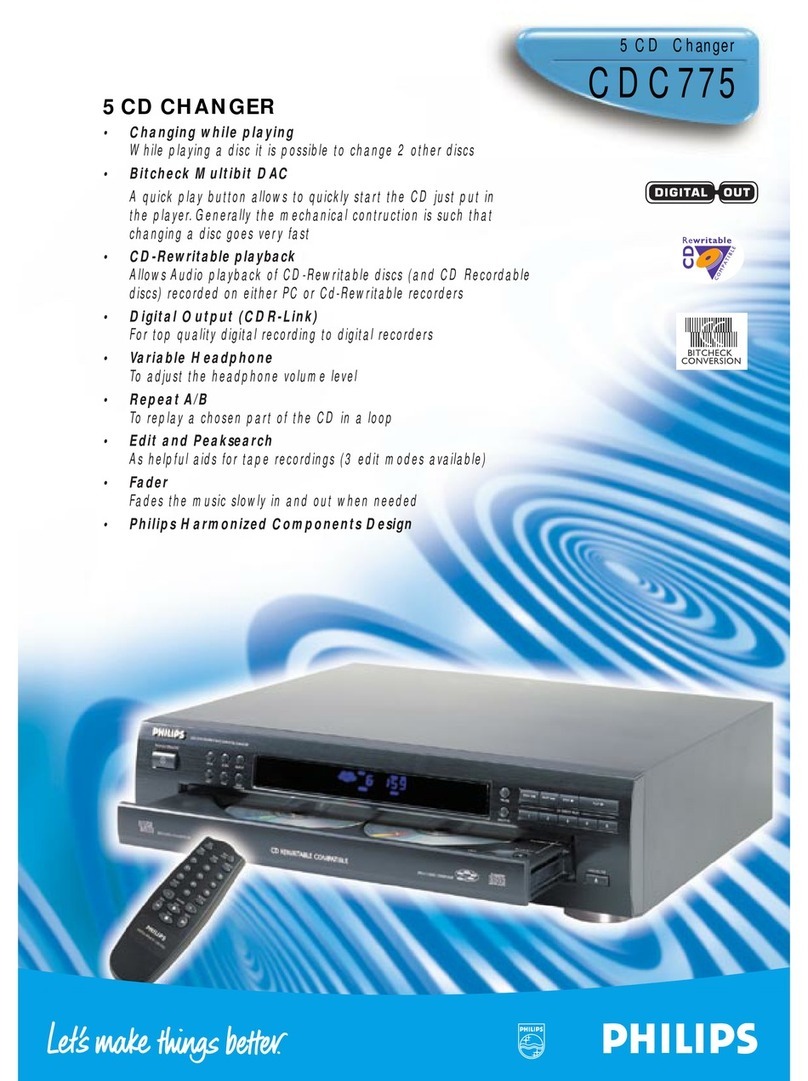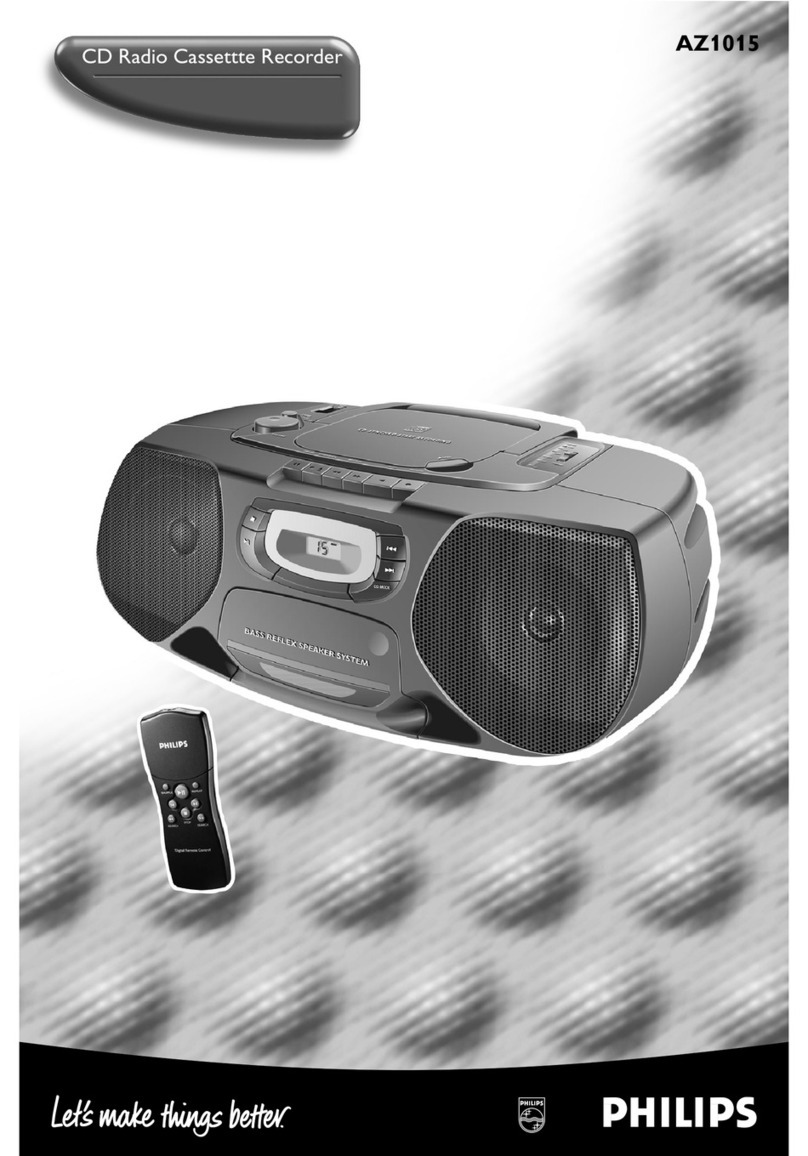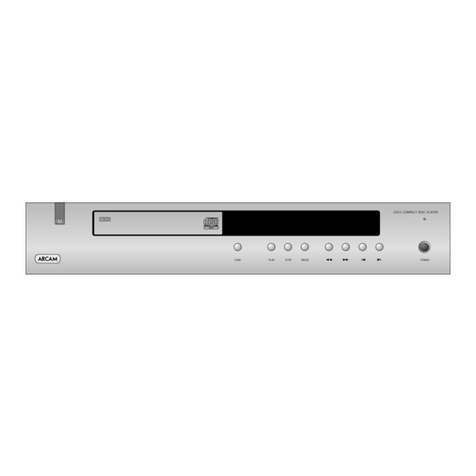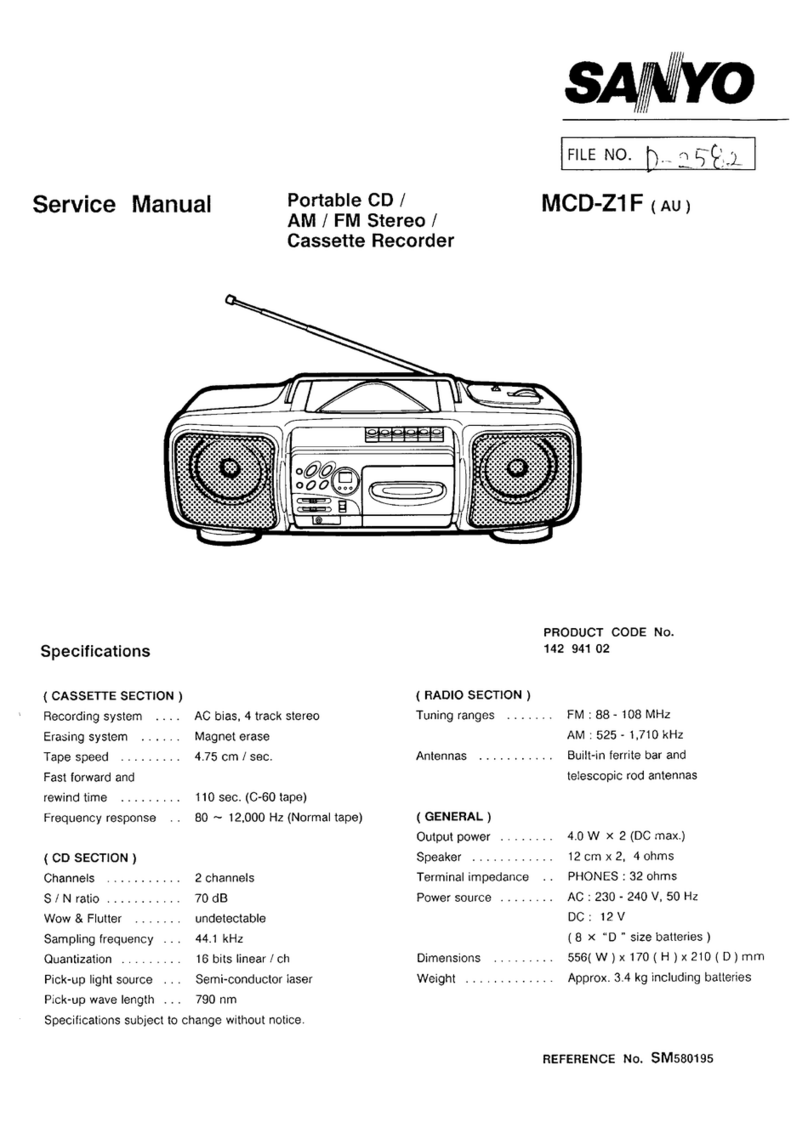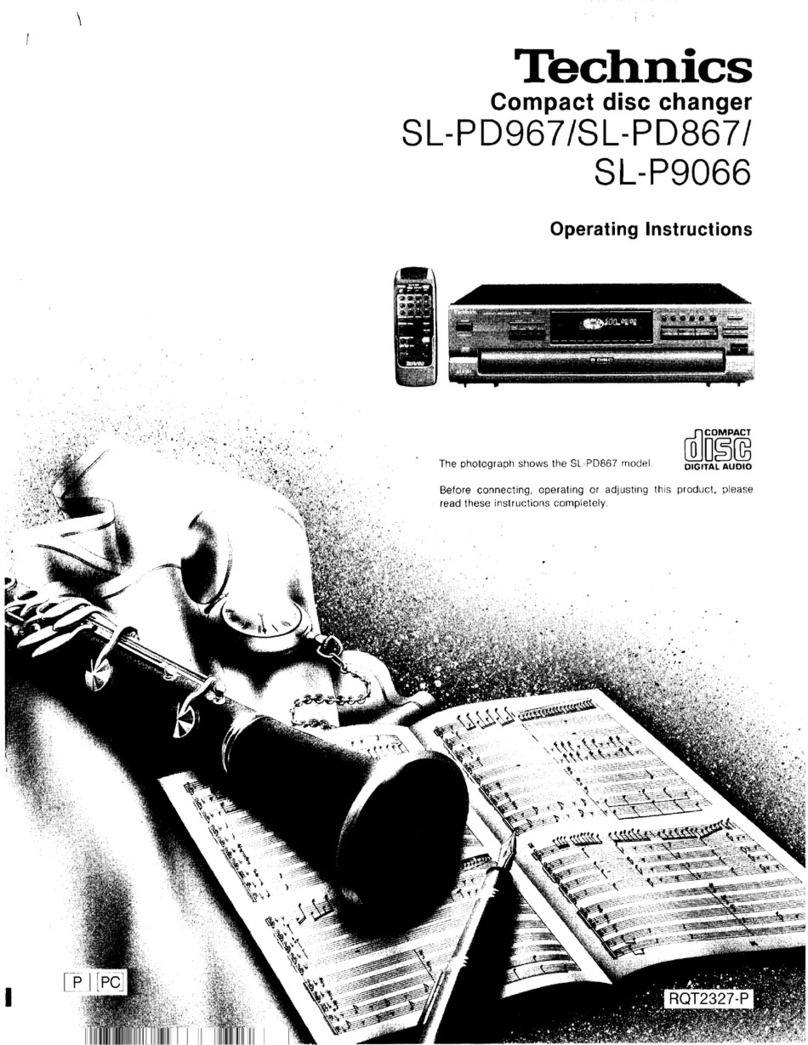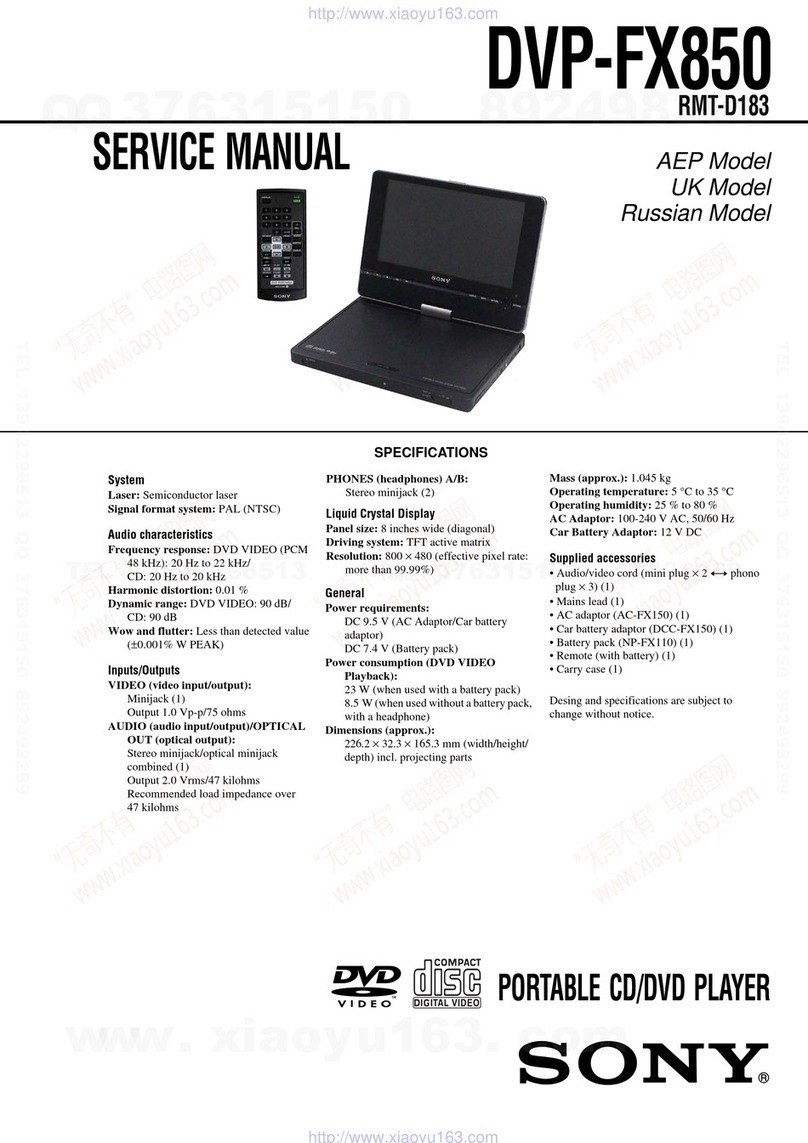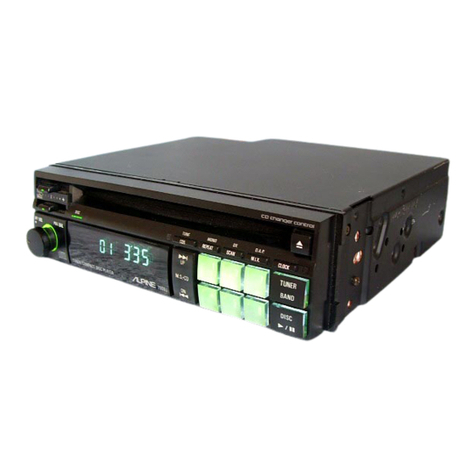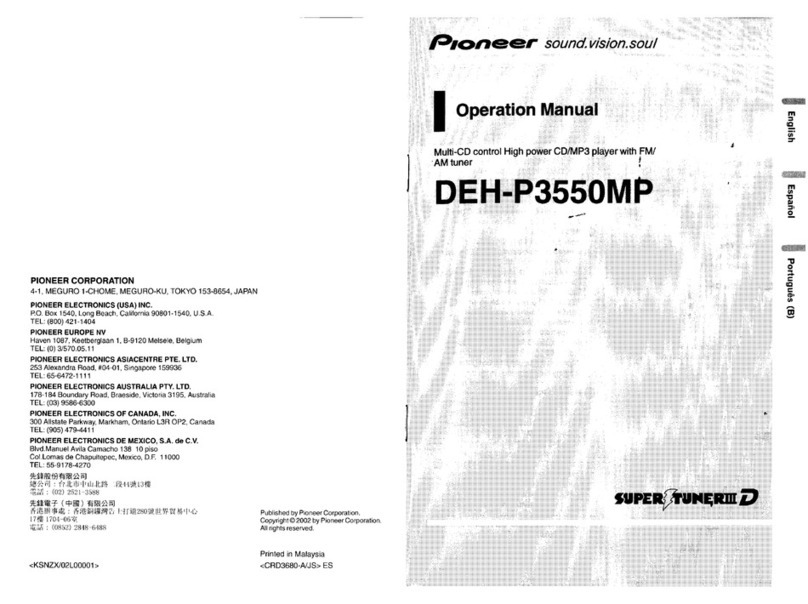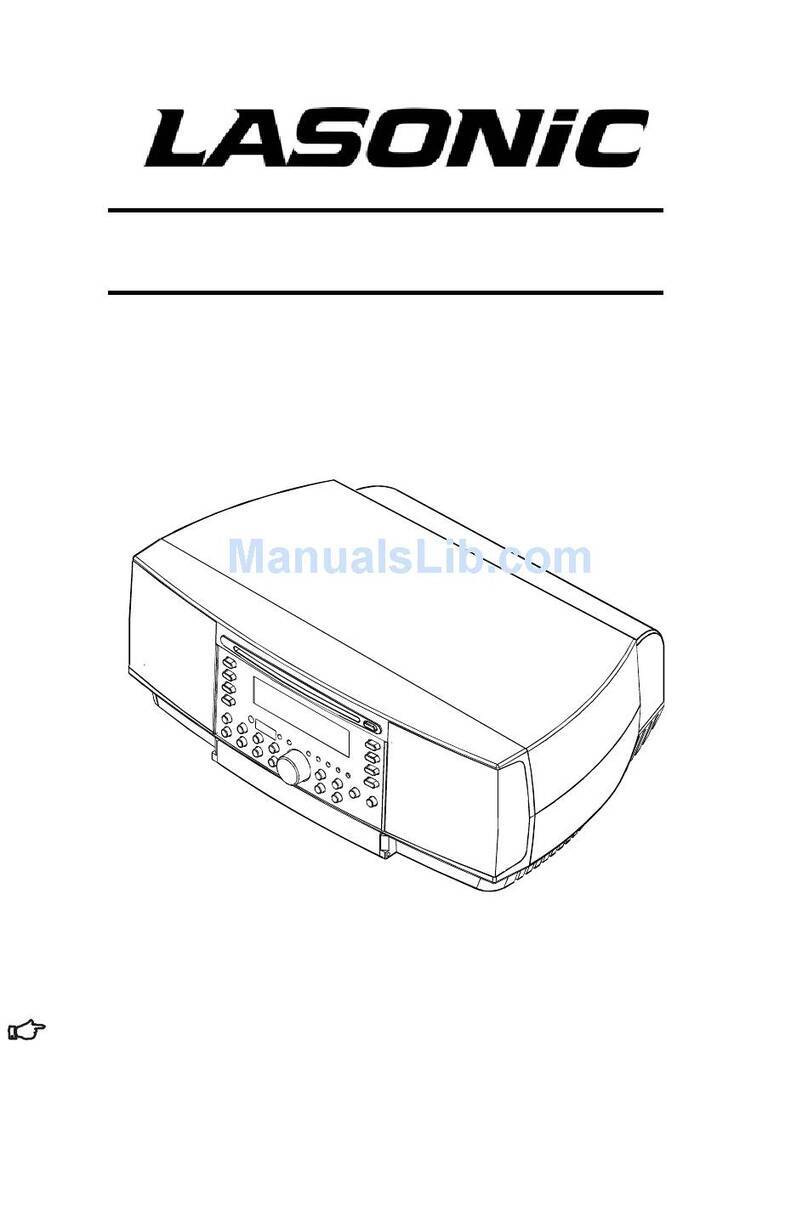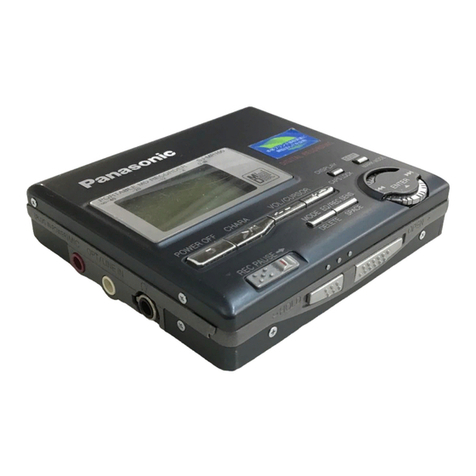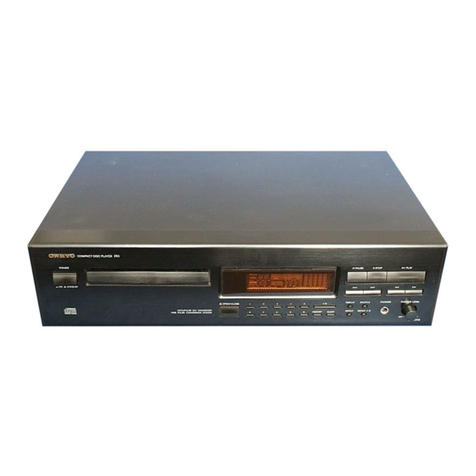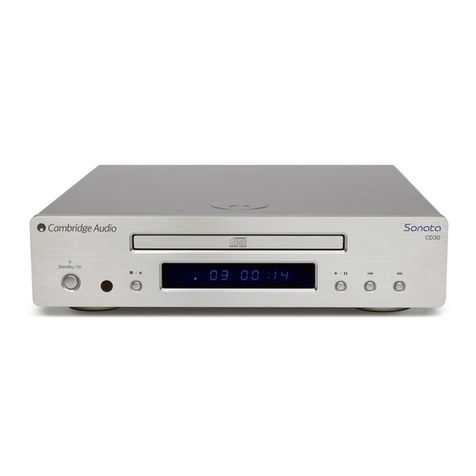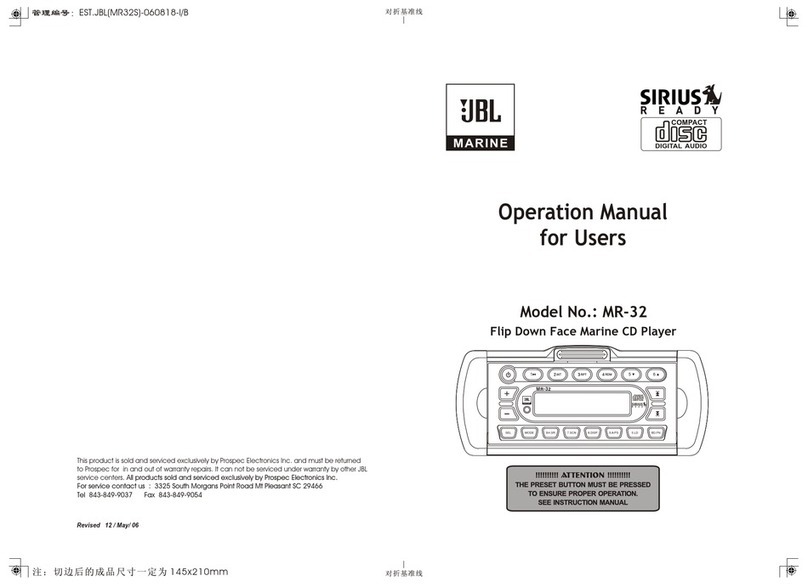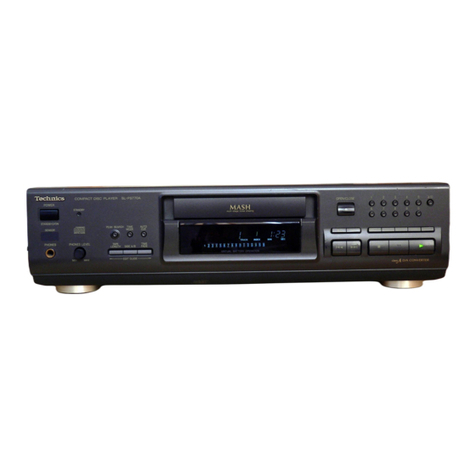
(
0
(ill
□
ii
DICITAL
Al/DIQ
4. ELECTRICAL MEASUREMENTS AND
ADJUSTMENTS
HINTS
Test disc
It Is important to treat the test discs with greatcare. The
disorders on the discs (black spots, fingerprints, etc.) are
exclusive and unambiguously positioned. Damage may
cause additional drop-outs, etc. rendering the intentional
errors
no
longerexclusive. In that case it
will
no
longer
be
possible
to
check e.g. the good working
of
the track
detectors.
Measurements
on
op-amps
In the electronic circuit op-amps have been used
frequently. Some
of
the applications are amplifiers,
filters, inverters and buffers.
In
those
cases where in one way
or
the other, feedback
has
been applied the voltage difference
at
the differential
inputs converges
to
zero. This applies
to
both DC and
AC signals. The cause can
be
traced
to
the properties
of
an ideal op-amp
(Z
1= oo, G =oo, Z0 =
0).
If one input
of
an op-amp is directly connected
to
ground
it
will be
virtually impossible
to
measure at the inverting and the
non-inverting inputs. In such cases only the output signal
will
be
measurable.
That
is
why in most cases
the
AC voltages
at
the inputs
will
not
be given. The DCvoltages
at
theinputs are equal.
Stimulation with "O" and
"1"
During troubleshooting sometimes certain points should
be connected
to
ground
or
supply voltage. As a result
certain circuit can be brought
in
a desired state thus
shortening the diagnosis time. In a number
of
cases the
related points are outputs
of
op-amps. These outputs are
short-circuit-resistant, i.e. they can be brought
to
"0"
or
ground without problems.
The output of
an
op-amp, however,
should
never be
connected directly to the power supply voltage.
Measurements
on
microprocessors
Inputs and outputs
of
microprocessors should never be
connected directly
to
the power supply voltage. The
inputs and outputs should only
be
brought
to
"0"
or
ground
if
this is stated explicity.
Measurements
with
an oscilloscope
During measurements with an oscilloscope
it
is
recommended
to
measure with a 1:10 test probe, since a
1:10 probe has a considerably smaller inputcapacitance
than a 1
:1
probe.
Selection of ground potential
It
is
very important
to
select a ground point that is as
close
as
possible
to
the
test
point.
Conditions for injection
-Injection
of
levels
or
signals from an external source
should never take place
if
the related circuit has
no
supply voltage.
The injected levels
or
signals should never
be
greater
than the supply voltage
of
the related circuit.
cs9 984
4-1
GENERAL CHECKPOINTS
In the detailed measuring method below a number
of
general conditions, required for a properly functioning
set, will
not
be mentioned. Before the detailed measuring
method is started, these general points should first
be
checked.
a.
Ensure that disc and objective are clean (remove dust,
fingerprints, etc.) and
work
with undamaged discs.
b. Check
if
all supply voltages are present and
if
they
have the correct values.
c.
Check the good working of the CD mechanism
by
means
of
the servicing programme.
Indication of test points
In the drawings
of
the diagrams and the
panel~e
test
points have been indicated
by
a number (e.g.
~)
to
which the measuring method refers. In the measuring
method below, the symbol
<◊l
has been omitted for
the
testpoints indicated.
Initiation of the servicing programme of the
µP
-Servicing
position
"0"
Simultaneously depress the PREVIOUS, NEXT and
TIME/TRACK buttons. Keep these three buttons
depressed while the mains voltage
is
switched on.
This is the STAND-BY mode,
"O"
appears on the display.
(Tray switch SK2 must
be
activated)
In this state as in service position "1", "2" and "3",
it
is
possible
to
move the arm
by
means
of
the SEARCH
FORW and SEARCH REV keys with a minimum torque
to
the outside and the inside resp.
This enables a check
to
the free motion
of
the
arm
across the disc.
After depressing one
of
those keys (SEARCH FORW
or
SEARCH REV) the laser will emit light.
-Servicing position
"1"
From servicing position "0" the player can be brought
in servicing position 1"
by
depressing the NEXT key.
In this state
the
laser emits light andthe objective
starts
to
focus. When the focal point has been
reached, "1" appears on the display.
When
no
disc has been inserted the objective goes
16x
to
and fro. Then the player reassumes servicing
position "0".
-Servicing position "2"
To
be reached by depressing the NEXT key after
servicing position "1"
has
been reached.
The
tumtable motor starts
to
run
On the display appears "2".
When in service position "1" the arm
is
moved
or
the disk
is moved roughly (disturbance
of
focus), the motorwill
start running
at
maximum speed in position
-,,2".
By
pressing the NEXT key, the player can
be
brought
back, via position "3", into position "0".
-Servicing position "3"
To
be reached
by
depressing the NEXT key after
servicing position
·2·
has
been reached.
The radial control
is
switched
on.
The subcode
information is ignored. MUSB
is
high
so
that the music
information
Is
released.

